Hey guys, after a little poke from @Wookii , I thought I'd share what I'm doing to propagate some of my emersed plants, particularly Bucephalandra. Full disclaimer; I was not the first to do this and there are many examples of people doing it online. It is also common place in large plant nurseries, but this is just a bit less fancy. Hopefully it helps at least one person!
Firstly, lets start with why you would do this in the first place;
Equipment
Successful Plant Species
Firstly, lets start with why you would do this in the first place;
- It is suitable for almost any plant (except fully aquatic species like Vallisneria, blyxa etc).
- If you don't currently have space or time to plant, you can put your plants in the Buce box until you are ready.
- You can grow plants algae-free without the need for water changes or maintenance.
- It is useful for keeping 'back ups' of plants in case your submerged ones fail.
Equipment
- Transparent container that can be sealed - I used a plastic storage box with lid from IKEA, cost me a few £. You can go as a big or small as you like with this, there is no limit. Just make sure it is transparent so light can get through! SAMLA transparent, Box with lid, 39x28x14 cm/11 l - IKEA
- Crushed lava rock (or anything similar)
- Aqua soil (I used Tropica Soil)
- Light (Full spectrum is ideal but any light that can grow plants will work - LED is better as it produces less heat which is important)
- Drill
- RO Water
- Place a layer of aqua soil into the container, about an inch thick is sufficient. Cover with a single layer of lava rock. It's actually good to leave some expose bits of soil so the roots can penetrate down. The lava rock is purely for adhesion.
- Fill with RO water to saturate up to the lava rock, but don't cover it with water. The lava rock should be half in and half out of the water.
- Drill some small air holes into the lid of your container - this is for airflow and to allow heat to dissipate.
- Fix your light unit above the container and set it to come on anywhere from 6-18 hours. I do 10 hours on my setup at 50% intensity (Chihiros C2 RGB)
- Place your plants on top of the lava rock and you're good to go!
- Spraying - Some people spray daily with RO water, I just spray every few days and things are doing just fine.
- Draining - Some will also drain the water in the bottom completely once a month. I have not needed to do this but if it's looking dirty or funky then change it out.
- Heat - A great tip given to me by @Siddy is to run your lights during the night when the ambient temperatures are at their coolest. This does wonders to keep the internal container temperature down as too high temperatures can melt the plants!
- Mould - Keep an eye out for mould growth and snip off any leaves that develop it. It won't always look as you'd expect, it might appear as red/brown hair or white whispy strings. If you're experiencing a lot of mould you should increase your ventilation with more holes. Overcrowding can also increase the likelihood of mould but I'm not one to talk, my boxes are crammed full and I don't have any mould but it's something to consider.
- Stem Plants - If you're not growing any epiphytes, you can forgo the lava rock and just use the soil. It works just as well!
Successful Plant Species
- Bucephalandra
- Cryptocoryne
- Aridarum
- Moss
- Liverwort
- Rotala
- Ludwigia
- Staurogyne
- Lindernia
- Micranthemum Tweedei (Monte Carlo)
- Utricularia Graminifolia
- Microsorum
- Anubias
- Hydrocotyle
- Eleocharis
- Proserpinaca
- Hygrophila
Attachments
-
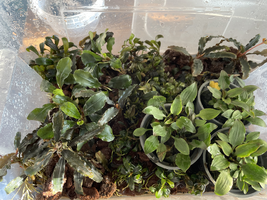 tempImagemA7qIp.png16.8 MB · Views: 3,753
tempImagemA7qIp.png16.8 MB · Views: 3,753 -
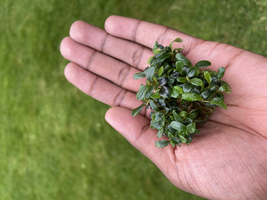 tempImagehr0IuM.png13.3 MB · Views: 906
tempImagehr0IuM.png13.3 MB · Views: 906 -
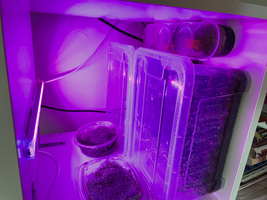 tempImagecwitTK.png12.8 MB · Views: 804
tempImagecwitTK.png12.8 MB · Views: 804 -
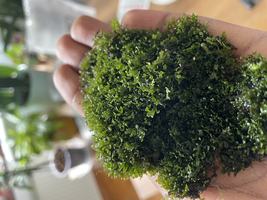 tempImageVEE5Pl.png14.7 MB · Views: 755
tempImageVEE5Pl.png14.7 MB · Views: 755 -
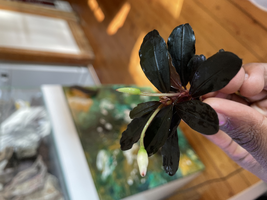 tempImageLrzTV2.png12.4 MB · Views: 749
tempImageLrzTV2.png12.4 MB · Views: 749 -
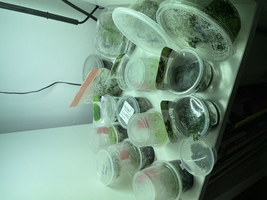 tempImageocfpRc.png12.6 MB · Views: 772
tempImageocfpRc.png12.6 MB · Views: 772 -
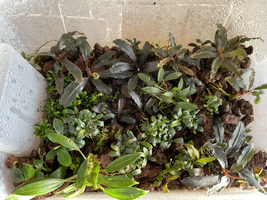 tempImageYNaUtb.png17.2 MB · Views: 873
tempImageYNaUtb.png17.2 MB · Views: 873 -
 IMG_7058.jpg1.8 MB · Views: 894
IMG_7058.jpg1.8 MB · Views: 894
Last edited:






